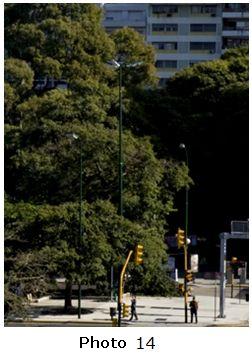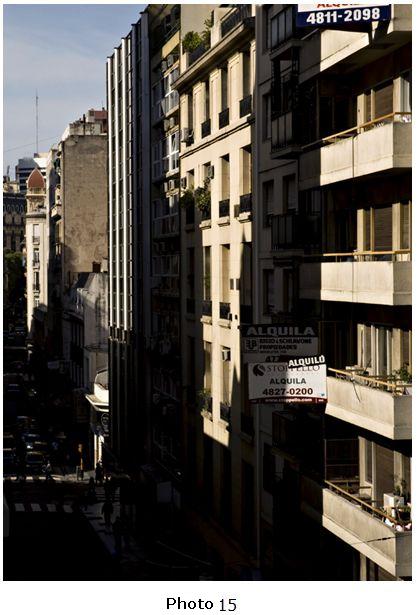Noon
The contrast, in spite of being fall, is greater than in the previous photographs. If you notice the shadows on the tree to the right, you will notice that they are black and they lack detail. Photograph 14 is a close-up of the previous photograph (photograph 13) for you to notice how detail in the shadows was lost.
If this photograph had been taken in the summer, contrast would have been even greater, and more detail would have been lost in the entire photograph.

As we mentioned previously, the sun is at its highest point at noon. In the summer, the sun will be right over our heads. This makes it impossible for us to vary this type of illumination if we just use sunlight. What I'm trying to tell you is that we can't use counter-light, or use light coming from the side or in front of the subject/object. Light will come from above. The direction of the light will always come from above.
During fall, and specially during winter, the sun at noon will also be in its highest point in the sky. However, it won't be in the same place as in the summer. This means we have a small chance to vary the direction of the light. In other words, we can place the subject/object for the light to reach in front of him/her, from the side, or we can use counter-light. Light will still come from above, but we will have a little degree of control over it.
Since there is always a great deal of contrast at noon (whenever there is sun available), it is impossible for the camera to register such contrast. This is why it is very important to measure the photograph correctly for a proper exposition. We will see 2 options with examples of photographs for you to understand this concept correctly.

I took this photograph at 2 pm in fall. As you can see, there is a high level of contrast in the scene: plenty of light and plenty of shadows.
To take this photograph, I measured the illuminated portion of the scene; the bright areas. I used an ISO 200 and the exposition was f/22 at 1/125. I exposed the light. As a result, I achieved a photograph with detail in the bright parts of the scene, but lost detail in shadows.
When we expose the photograph in this way, I achieved a dramatic image, with dark shadows and a special mood.

